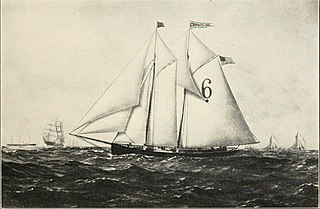
William H. Starbuck was a 19th-century New York pilot boat built to take the place of the Mary and Catherine, that sank in 1885. She was launched from the J. S. Ellis & Son shipyard, at Tottenville, Staten Island in 1886. The Starbuck was one of the few pilot-boats to take the offensive in the Great Blizzard of 1888, when she ran into the steamship Japanese and survived one of the most severe recorded blizzards in American history. She was one of the last pilot boats that were sold in an age of steam and electricity.
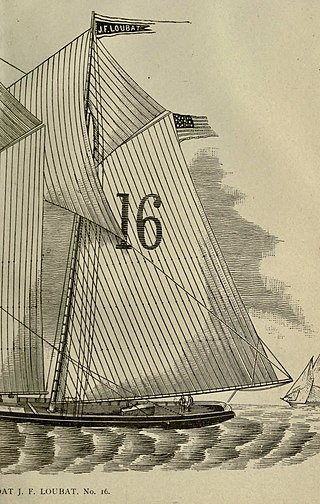
The Joseph F. Loubat was a 19th-century Sandy Hook pilot boat built in 1880 at the Jacob S. Ellis shipyard in Tottenville, Staten Island. She was the largest of the pilot-boats in the Sandy Hook service. In 1896 she was one of the last pilot-boats that were sold in an age of steam and electricity.

The Columbia was a 19th-century pilot boat built C. & R. Poillon shipyard in 1879 for Sandy Hook and New York pilots that owned the Isaac Webb, which was lost off Quonochontaug Beach, Long Island in July 1879. She was run down by the Guion Line steamer SS Alaska in 1883. A second pilot-boat, also named Columbia, was built by Ambrose A. Martin at East Boston in 1894 that had a unique sppon bow and was extremely fast. She was thrown ashore in the great Portland Gale, and remained on the Sand Hills beach in Scituate, Massachusetts for over thirty years as a marine curiosity. The Louise No. 2 replaced the ill-fated Columbia.

The Thomas S. Negus was a 19th-century two-masted Sandy Hook pilot boat, built by C. & R. Poillon shipyard in Brooklyn in 1873 for the New Jersey maritime pilots. She was built to replace the pilot boat Jane, No. 1, which sank in early 1873. She was the winner of a $1,000 prize at the Cape May Regatta in 1873. She was named for Thomas S. Negus, president of the N. J. Pilots' Commissioners. In 1897, she left the pilot service to prospect for gold during the Klondike Gold Rush.

The Widgeon was a 19th-century yacht and Sandy Hook pilot boat, built in 1855 by James R. & George Steers for Daniel Edgar of the New York Yacht Club and designed by George Steers. She came in 17th in an unsuccessful America’s Cup defense in 1870. Widgeon was sold in 1871 to a group of New York pilots to replace the John D. Jones, which sank in a collision with the steamer City of Washington. New York pilots condemned the Widgeon as unseaworthy in 1879, which sparked a fight for steam pilot-boat service. In 1883 a decision was affirmed by the Supreme Court and the Board of Commissioners of Pilots that pilot boats could be "propelled" by steam.

The Charles H. Marshall was a 19th-century Sandy Hook pilot boat built by Henry Steers in 1860 for a group of New York pilots. She was in the Great Blizzard of 1888, the same year the National Geographic came out with an article about the successful struggle made by the crew of the Marshall. The boat was named in honor of the American businessman Charles Henry Marshall. In the age of steam she was sold in 1896.

The Edward F. Williams was a 19th-century Sandy Hook pilot boat, built in 1863 at the Edward F. Williams shipyard in Greenpoint, Brooklyn for a group of New York Pilots. She survived the Great Blizzard of 1888. In the age of steam, the Williams was sold in 1896.

The Mary A. Williams was a 19th-century Sandy Hook pilot boat, built in 1861 by the shipbuilder Edward F. Williams in Greenpoint, Brooklyn, for a group of New York pilots. She was named Mary Ann Williams after the wife of the builder. The boat was considered one of the finest connected with the pilot service. She survived the Great Blizzard of 1888. In the age of steam, the Mary A. Williams was sold in 1896.
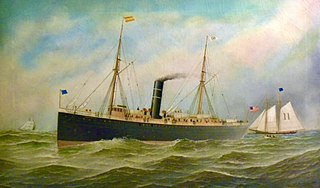
The Ezra Nye was a 19th-century pilot boat, built in 1859 by the Wells & Webb shipyard in Greenpoint, Brooklyn for a group of New Jersey and Sandy Hook Pilots. She was one of the pilot-boats that was in the Great Blizzard of 1888, that was one of the most severe blizzards in American history. In 1896, in the age of steam, the Ezra Nye along with other pilot boats, were replaced with steamboats.

The Jesse Carll was a 19th-century pilot boat, built in 1885 by Jesse Carll at Northport, New York, for George H. Sisco. She was one of the largest vessels ever built in the Sandy Hook service. She was named in honor of Jesse Carll, a well-known Northport shipbuilder. In 1896, in the age of steam, the Ezra Nye, along with other pilot boats, were replaced with steamboats.

The David Carll was a 19th-century pilot boat, built in 1885 at the David Carll shipyard in City Island, New York. She was named in honor of David Carll, a well-known City Island shipbuilder. The David Carll was considered to be among the fastest schooners in the fleet. She was built to replace the Mary E. Fish that was run down and sank by the schooner Frank Harrington in 1885. She was one of the pilot boats that survived the Great Blizzard of 1888. The David Carll was lost at sea in 1893.
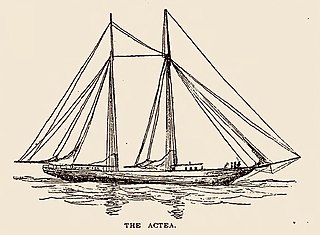
The Actaea, or Actea, was a 19th-century Boston yacht built in 1880 by Weld and David Clark of Kennebunk, Maine for David Sears, Jr., of Montgomery Sears of Boston. She was purchased by a group of New York Sandy Hook Pilots in 1890. She was one of the largest and fastest pilot boats in the fleet. In the age of steam, the Actaea was sold in 1896 to John J. Phelps of the New York Yacht Club and used as a pleasure yacht.
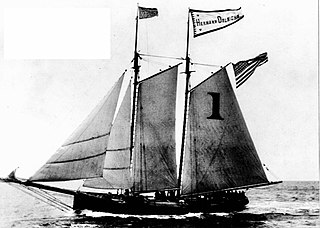
The Hermann Oelrichs was a 19th-century Sandy Hook Pilot boat, built in 1894 by Moses Adams at Essex, Massachusetts for a group of New York Pilots. She helped transport New York City maritime pilots between inbound or outbound ships coming into the New York Harbor. The Herman Oelrichs was said to be the fastest of the New York pilot fleet. She was built to replace the pilot boat Hope, that was wrecked in 1890.

Edmund Blunt was a 19th-century New York pilot boat built in 1858 by Edward F. Williams for the New York Pilots. She helped transport New York City maritime pilots between inbound or outbound ships coming into the New York Harbor. She survived the Great Blizzard of 1888. In the age of steam, the Blunt along with other pilot boats, were replaced with steamboats. She was built to replace the Jacob L. Westervelt, which sank in 1857.
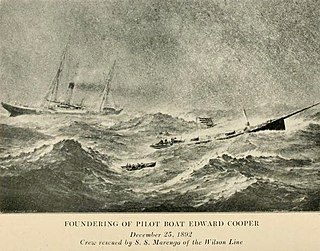
The Edward Cooper was a 19th-century Sandy Hook pilot boat, built in 1879 for New York Pilots at Greenpoint, Brooklyn. She was named in honor of the Mayor of New York City. The Edward Cooper helped transport New York City maritime pilots between inbound or outbound ships coming into the New York Harbor. She survived the Great Blizzard of 1888. In 1892, the Cooper sank in a snowstorm and was replaced by the Joseph Pulitzer in 1894.

The Mary E. Fish was a 19th-century Sandy Hook pilot boat, built at the Edward F. Williams shipyard of Greenpoint, Brooklyn in 1861 for Richard Brown and the New York Pilots. She was built to replace the Mary Taylor. The Fish was hit and sank by the schooner Frank Harrington in 1885 and replaced by the David Carll.
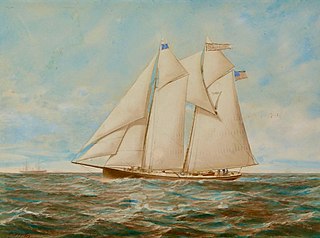
The Edmund Driggs was a 19th-century Sandy Hook pilot boat built in 1864 at the Edward F. Williams shipyard in Greenpoint, Brooklyn. She was built to replace the pilot boat Elwood Walter. The schooner was used to pilot vessels to and from the Port of New York. She survived the Great Blizzard of 1888. In the age of steam, she was sold in 1896.

The Joseph N. Lord was a 19th-century Sandy Hook pilot boat built in 1840 at the Jabez Williams shipyard in East River, for New York pilots. She helped transport maritime pilots between inbound or outbound ships coming into the New York Harbor. The Joseph N. Lord was lost at sea in 1845 at Port-au-Platt, Dominican Republic.
The Josiah Johnson was a 19th-century Sandy Hook pilot boat built in the early 1840s by Sandy Hook pilot Josiah Johnson Sr. She was named after the builder. The Josiah Johnson was struck down by the schooner Wanata off of Barnegat and sank in 1869. This resulted in a collision case to recover damages that went to the District Court. The court found that the Wanata was at fault for not keeping a lookout.
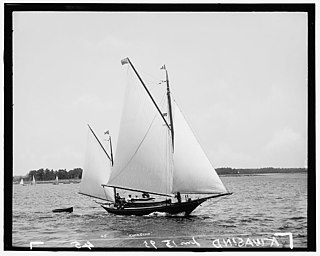
Elbridge T. Gerry was a 19th-century New York Sandy Hook pilot boat built in 1888 at the Robinson & Waterhouse shipyard in City Island, Bronx. She was named in honor of Elbridge Thomas Gerry, a commodore of the New York Yacht Club. She served as a pilot boat from 1888 to 1896, when she was sold for offshore yachting cruises. Her name was changed to Kwasind, after the strongman in Henry Wadsworth Longfellow's Song of Hiawatha.




















